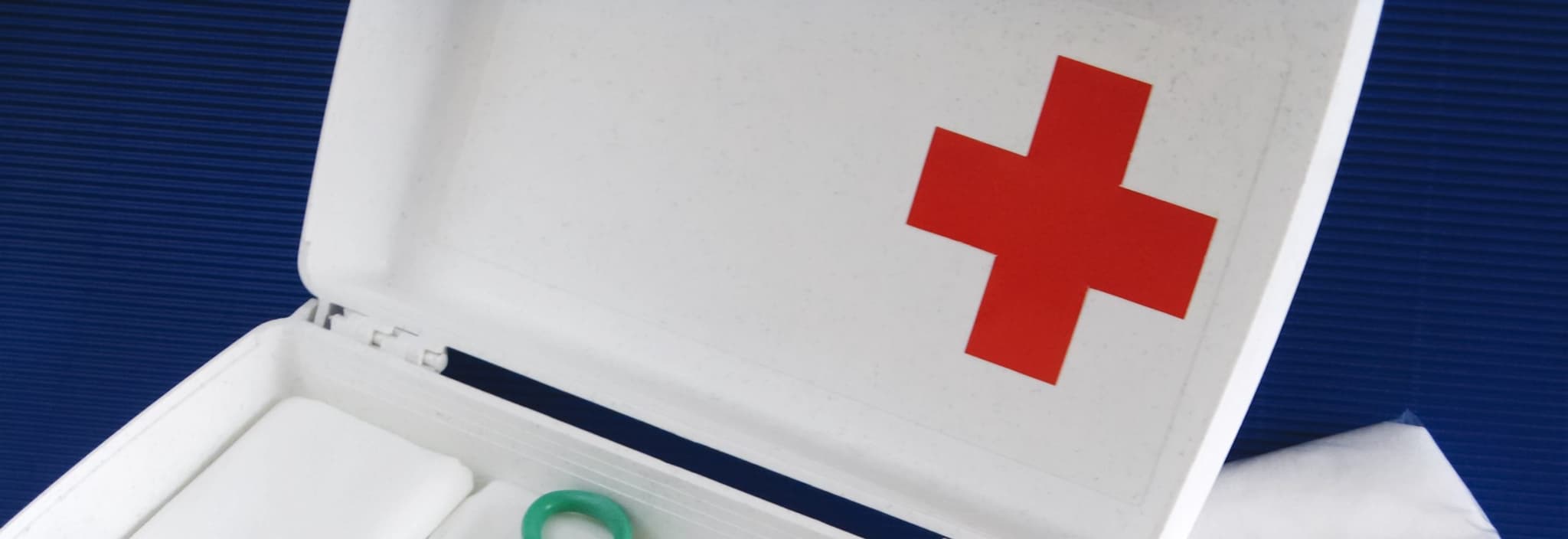
2025-11-21T14:10:25
How to Prevent Gestational Diabetes
- Family Medicine
- Internal Medicine
- OB/GYN
May 16, 2016 | Family Medicine
Specialties:Family Medicine

A well-stocked first aid kit can be a real lifesaver for patients requiring urgent care.
First aid kits have been around for more than 150 years. Robert Wood Johnson, the founder of the Johnson & Johnson medical supply company, boarded a Colorado-bound Denver & Rio Grande Railway train for a vacation in 1888. Johnson began to chat with the chief surgeon for the railroad, who noted how difficult it was to get injured workers to a doctor quickly. The conversation gave Johnson the idea to pack essential items, such as bandages, gauze and dressings, in protective metal boxes that the railroad company could store close to where injuries occurred.
Many first aid kits still feature a protective metal box, but commercial kits vary considerably in size. The American Red Cross sells several preassembled kits, with their largest kit including 113 pieces. First aid kits do not need to be this large, though, and a commercial kit is not necessarily better than a homemade one. In fact, you can make your own first aid kit with just five essential items.
The five most important items for any first aid kit are:
Common reasons for using a first aid kit include cuts and lacerations, splinters, burns, bee stings and bug bites, although a first aid kit comes in handy for a number of small medical emergencies. Emergencies can happen anywhere, so it is helpful to store first aid kits at home, in the car, at work, in a backpack used for hiking, on a bicycle, a sports field or anywhere a person might go.
First aid kits do not need to be large, and a commercial kit is not necessarily better than a homemade one.
Simply having a first aid kit is not enough—someone has to know how to use it. Some knowledge of basic first aid can mean the difference between life and death.
Check the surroundings to make sure it is safe to render aid. Look for fire, toxic smoke or gasses, an unstable building or live electrical wires before approaching the person.
Assess the problem to determine if the individual needs professional medical care. Even the largest, most complete first aid kit is inadequate for rendering treatment for uncontrolled bleeding heart attacks, serious allergic reactions and other life and death emergencies. Call 911 for help or deliver the person to the emergency department as needed.
Call 911 for immediate help in emergency situations.
Provide care, using the contents of the first aid kit as needed. Put gloves on first. Use the scissors to cut the individual’s clothing away from a bleeding injury or to free the patient from a seatbelt. Wipe away blood to expose the injury, use the tweezers to remove any debris and apply antibiotic cream to the wound. Apply pressure to the wound with a piece of folded gauze and use a bandage to hold the gauze securely in place. Refill the first aid kit with fresh supplies and return to its storage place.
For more information on first aid kits and rendering emergency care, contact Revere Health by calling (801) 354-8205. Our urgent care professionals provide affordable, convenient care for non-life threatening illnesses and injuries, without an appointment or the cost of an emergency room visit.

WRITTEN BY:
Dr. Abe Tomco
Dr. Abe Tomco at North Orem Family Medicine is ready to partner with you and empower you with healthy lifestyle habits to help you care for your body and prevent illness. Dr. Tomco’s motto is, “An ounce of prevention is worth a pound of cure,” and he loves sharing his passion for preventive medicine with children, adolescents, and adults.

2025-11-21T14:10:25

2025-11-03T11:32:24

2025-10-21T11:51:52

2025-08-20T16:07:59
This information is not intended to replace the advice of a medical professional. You should always consult your doctor before making decisions about your health.